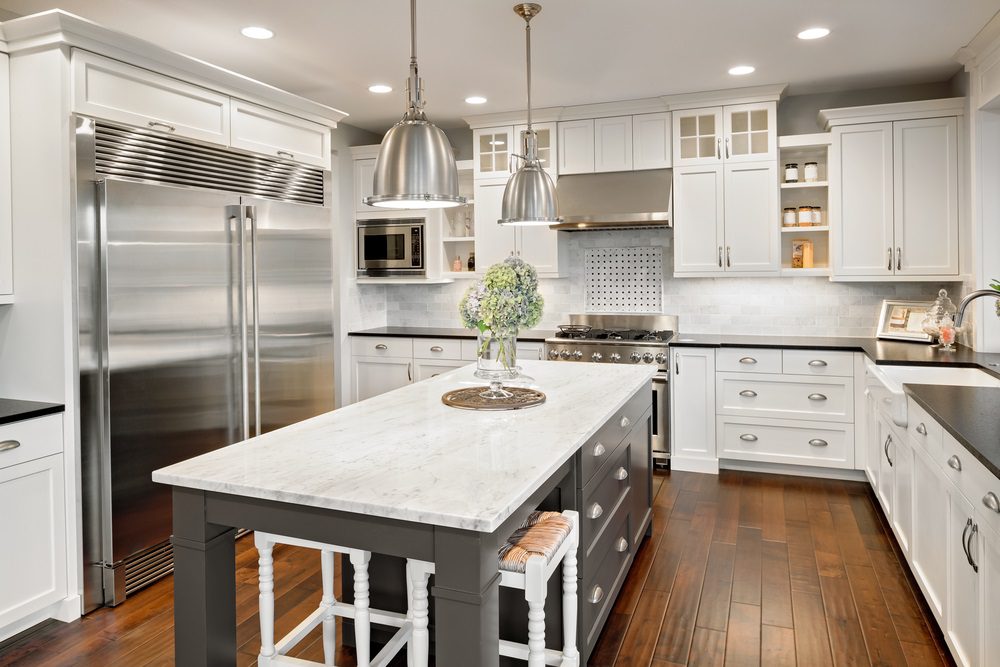How to Survive a Kitchen Remodel in 2024
A kitchen remodel is one of the most involved and stressful home improvement projects you can undertake. Your kitchen is likely the most used room in your home, so a remodel disrupts your daily routine and requires living in a construction zone for weeks or months. By carefully organizing and preparing ahead of time, you may reduce stress and achieve your ideal kitchen.
This guide by Unique Kitchen and Baths will walk you through the key steps to survive a kitchen remodel in 2024. We’ll cover setting a realistic budget, creating a timeline, hiring contractors, designing your new kitchen, handling demolition and installation, inspecting progress, finishing details, and finally enjoying your updated cooking space. With the right strategies, you can keep your sanity intact. The advantages of a practical kitchen outweigh the short-term inconvenience of a kitchen redesign, which requires time, money, and patience. Let’s get started.
Contents
Set Your Budget
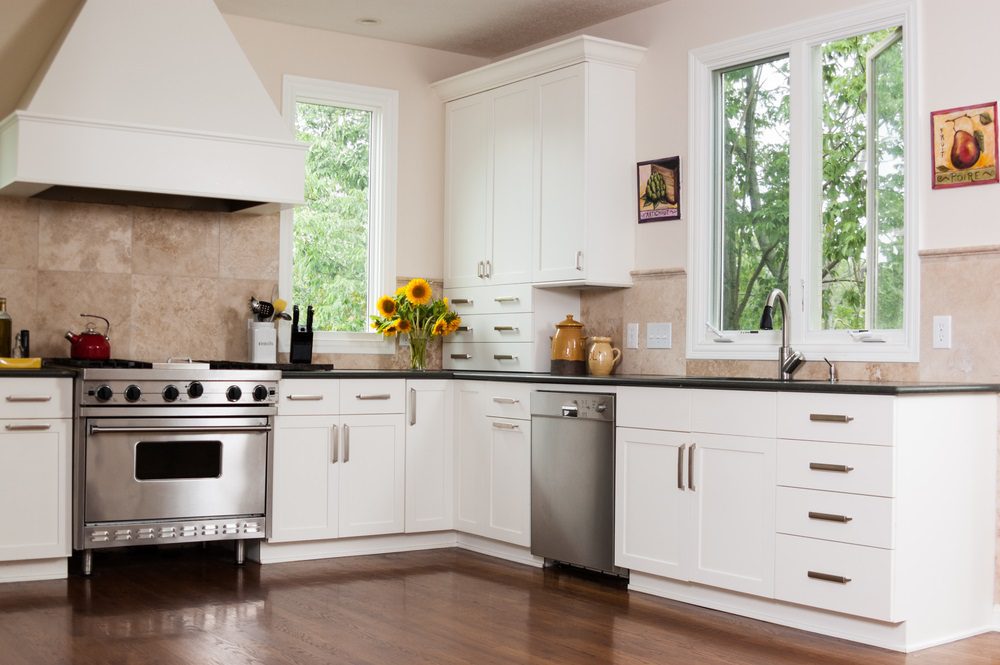

Determining what you can realistically afford is one of the most important steps when planning a kitchen remodel. Calculate your budget carefully to avoid overspending.
First, review your finances and savings to determine the maximum you can spend. Remodels can range from $10,000 for minor updates to $50,000 or more for complete gut renovations. Set your upper limit based on what you can afford, not by wishful thinking.
Next, research the typical costs in your area. Labor and material prices vary greatly by region. Get quotes from contractors to understand approximate costs for the scope of work you want to be done. This will help refine your budget.
Factor in potential unexpected costs that could arise during the remodel, like the need for new wiring or plumbing repairs. Add 10-20% as contingency funds. It’s better to have a leftover budget than run a short mid-project.
Once you’ve crunched the numbers, set your budget and avoid exceeding it. Track spending closely as the remodel progresses. Making adjustments along the way is easier than realizing at the end that you’ve spent too much. Setting a realistic budget at the start will make the remodel process smoother.
Create a Timeline
Establishing a schedule for your kitchen renovation is essential to maintaining project momentum and preventing setbacks. You’ll want to map out each remodel stage and assign a completion timeframe.
- Start by determining the overall timeline for the entire remodel. Most kitchen remodels take 4-8 weeks from start to finish—factor in potential delays or setbacks by building some buffer room in your timeline.
- Break the remodel into stages like demolition, installation, and finishing details. Assign a specific timeframe for completing each stage. Demolition may take 2-3 days, cabinet installation one week, countertop fabrication two weeks.
- Identify any dependencies across stages. For example, new flooring can only be installed once old flooring is removed, and new cabinets can only be installed once the flooring is finished. Build dependencies into your timeline.
- Schedule appliance deliveries and installation timeframes. New appliances often require lead time for ordering/delivery and should be installed after cabinetry and countertops.
- Plan for inspection checkpoints throughout the remodel, like after demolition, rough electrical, plumbing, etc. Build inspections into your timeline.
- Leave time to address any issues or changes during the remodel. Remodels often involve some unforeseen circumstances that require timeline adjustments.
- Review the timeline with your contractor and get their input. They can help identify any gaps or issues based on experience.
A detailed, stage-by-stage timeline on how to survive a kitchen remodel will keep you on schedule and make the process smoother for all involved. Be sure to revisit and adjust timeframes if needed as the project progresses.
Hire a Contractor
Before selecting a contractor to hire, do your homework and speak with a few of the contractors.
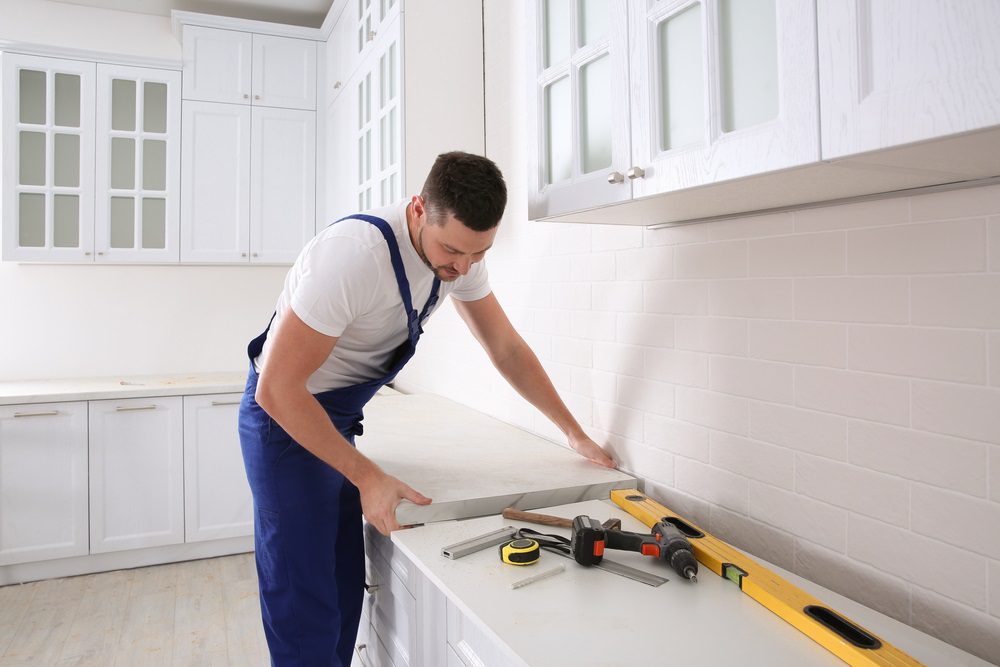

- Get recommendations from friends, neighbors, or your realtor who have had kitchen remodels done recently. Ask about their experience working with the contractor.
- Search online review sites like Yelp and Houzz to read feedback from past clients. Look for contractors with consistently good reviews over several years.
- Verify that potential contractors are licensed, bonded, and insured. Ask to see proof.
- Ask contractors for a portfolio of previous kitchen remodel projects. Make sure they have extensive experience with projects similar to yours.
- Get the names of three to five satisfied clients and ask them about their experiences. Ask about the level of work quality, punctuality, communication, and adherence to the budget.
- Ask contractors detailed questions about how they approach projects. Their processes, communication style, and organizational skills are just as important as the quality of their work.
- Get at least 3-5 written estimates. Compare bids carefully, not just based on bottom line price. Make sure bids include the same scope of work.
- Trust your gut feeling during interviews. Hire a contractor you feel comfortable with who understands exactly what you want.
Taking the time upfront to hire the right kitchen remodeling contractor carefully will pay off tremendously in the long run. Take your time with this crucial process.
Design Plan
Deciding on the layout, appliances, and finishes for your kitchen remodel is one of the most exciting parts of the process. This is where you’ll bring your vision to life. When designing your new kitchen, here are some tips:
Layout
- Decide how you want to use the space. Do you cook often and need lots of countertop space? Or is your kitchen more for quick meals? Identify your needs.
- Consider the workflow. Position appliances, sinks, and counters in a way that makes sense for how you cook and clean.
- Allow enough room to open appliances, cabinets, and drawers. Measure appliance openings to ensure adequate space.
- Incorporate islands or peninsulas if desired for more workspace and seating.
- Remember lighting! Make sure to plan for ample task lighting.
Appliances
- Choose appliances based on your needs and lifestyle. Cooks may want pro-style ranges and cooktops, while casual cooks can opt for sleek, user-friendly appliances.
- Select the right fuel type. Gas, electricity, and induction each have pros and cons to weigh.
- Measure your space and choose appliance sizes accordingly. Optimize storage with drawer microwaves and under-counter fridges.
- Decide on must-have features. Do you need a warming drawer or wine fridge? Steam oven or convection baking?
Finishes
- Choose cabinet styles and finishes that suit your home’s aesthetic. Compare wood species, laminates, lacquers, and more.
- Select durable, low-maintenance countertop materials that fit your lifestyle. Granite, quartz, solid surface, and laminate all have different benefits.
- Pick backsplashes and accent tiles you love. Glass, ceramic, metal, and stone tiles all add visual interest.
- Pay attention to the sink and faucet. There are many stylish options for both form and function.
- Consider easy-clean flooring like luxury vinyl plank, tile, or seamless materials.
Planning the design is a chance to customize your perfect kitchen. Decide on the most important details for your home and lifestyle. With some thoughtful planning, you’ll have a beautiful and functional new kitchen.
Demolition
The demolition phase of your kitchen remodel involves removing cabinets, countertops, flooring, appliances, sinks, faucets, lighting fixtures, and anything else that needs to be replaced in your new kitchen design.
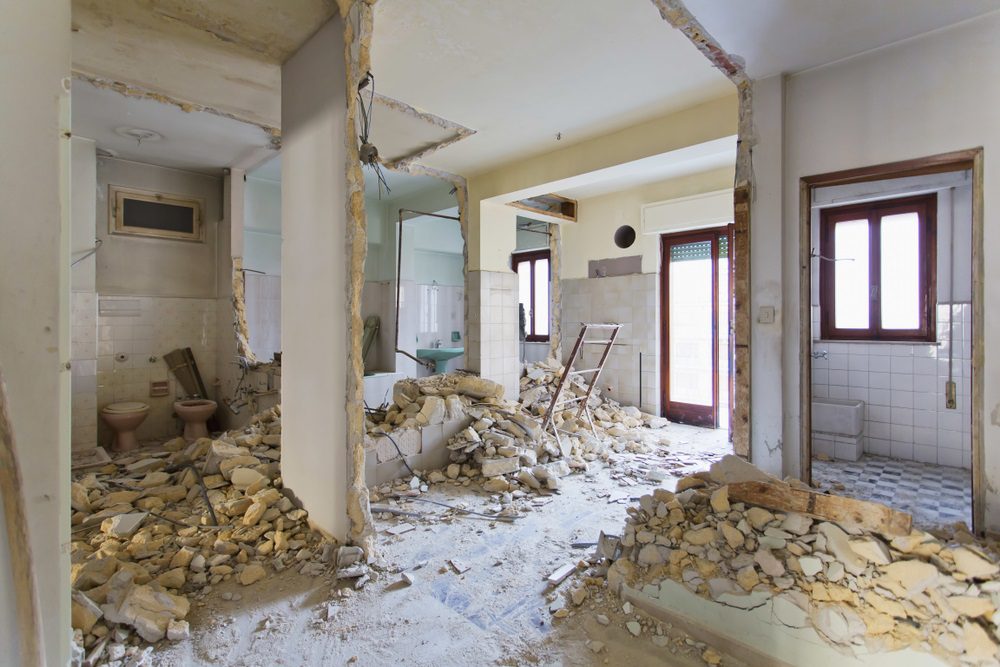

Proper planning and precautions during demolition will help the project run smoothly.
Prepare for Demolition
- Clear out the kitchen and anything removable like small appliances, cookware, etc. Pack items carefully and label boxes by room for easy access later. Consider renting storage if needed.
- Protect surfaces like floors in adjoining rooms from debris during demolition. Use drop cloths or plastic sheeting and tape them down securely.
- Turn off electricity and shut off water lines to appliances being removed. Consult with the contractor on safely disconnecting gas, electricity, and plumbing.
- Have a marked demolition plan for the contractor indicating what stays vs. goes.
Manage the Demolition Phase
- Demolition can be noisy and messy. Warn household members, especially children and pets, and close doors to contain dust and debris.
- Ensure the contractor follows safety protocols like wearing protective gear, ventilating areas, and using caution with electrical, gas, and plumbing lines.
- Properly dispose of demolition waste. Most can go in a dumpster rented for the remodel, but hazardous waste may need special disposal.
- Visit the site daily to inspect progress and address any issues immediately.
- Be flexible – demolition may reveal unforeseen problems like mold or the need for structural changes. Work with the contractor to adapt the plans as needed.
Proper preparation and close oversight during demolition will pave the way for a smooth kitchen remodel. Paying attention to safety and cleanup will minimize disruption to your home.
Installation
More on how to survive a kitchen remodel? One of the most exciting parts of remodeling is overseeing the installation of cabinets, countertops, flooring, and appliances. However, it’s important to monitor the work closely to ensure it is being done properly.
Make sure the cabinets are plumb and level before starting the installation process. Verify if doors and drawers open and close smoothly and look for any scratches or other damage. Examine the overhangs and seams once the countertops are installed, and check for any instability or rocking.
For flooring, whether tile, wood, or other materials, examine the subfloor preparation. Make sure underlayments or backings are properly installed. Watch the flooring installation closely to ensure the materials are aligned and fit tightly.
Finally, when appliances arrive, thoroughly inspect each item before signing off. Test all functions and settings, check for exterior damage, and ensure each appliance is level. Keep all manuals and warranty information in a safe place.
Overseeing the installation process takes time but avoids having to redo subpar work. Be present as much as possible, ask questions, and don’t hesitate to request corrections. Your involvement will pay off with a smoothly installed, high-quality kitchen.
Inspect Progress
Regular inspection and oversight are crucial during a kitchen remodel to ensure quality artistry and adherence to the timeline. As the homeowner, you should check in on the remodel at least a couple of times per week, if not daily. Walk through the space and visually inspect all completed work for flaws, such as uneven tile grout lines, scratched finishes, improperly installed cabinets, or anything else that looks subpar. Feel free to point out any issues to the contractor – it’s much easier to fix problems now than after the project.
In addition to inspecting work quality, check in with your contractor regularly on the project timeline. Most contractors should provide a detailed schedule upfront with major milestones and estimated dates for completing various stages. Track progress against this schedule to ensure everything runs smoothly. If certain phases fall behind schedule, discuss the reasons with your contractor immediately and develop a plan to get back on track, such as adding more workers or adjusting the schedule. The key is constant communication and oversight rather than simply leaving the contractors alone and hoping for the best. A kitchen remodel is a major investment, so take an active role in inspecting work to get the desired results on time and budget.
Finish Details
The final touches can really complete your new kitchen design.
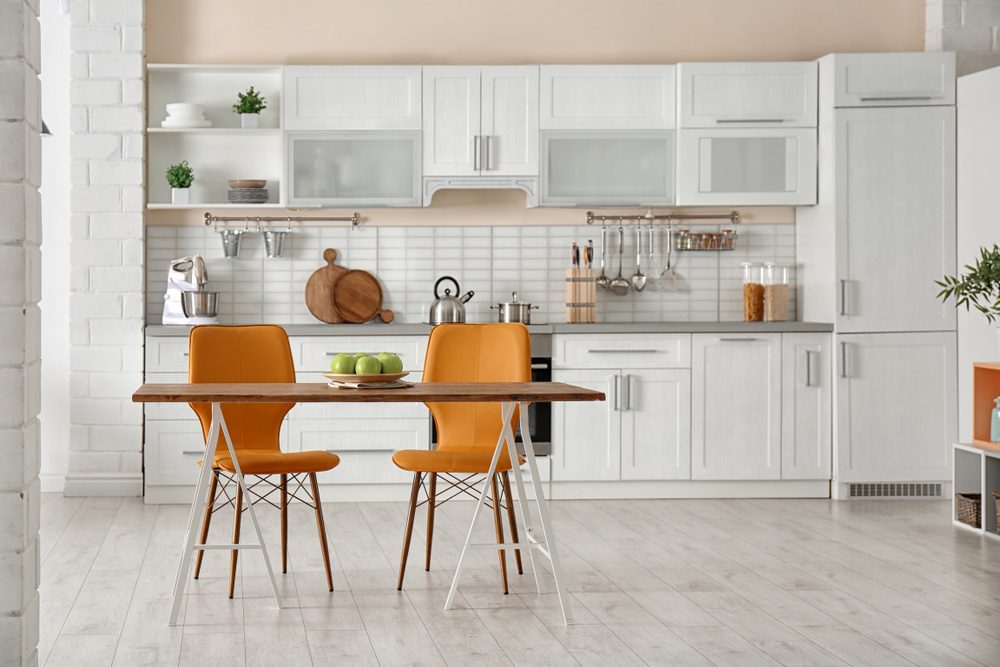

Carefully consider lighting, accessories, and small details that reflect your style.
Add Final Lighting
In order to set the perfect mood in your new kitchen, lighting is essential. To offer task lighting for food prep and dining, install pendant lights above your kitchen island or dining table. Your countertops are pleasantly illuminated by under-cabinet lighting. The entire room is made brighter by recessed ceiling lighting. Think about the lighting requirements for various areas and tasks in the kitchen. Dimming switches let you adjust the ambience.
Add Accessories and Decor
Accessorize your new kitchen with your favorite decorative touches. Display your cherished kitchenware with open shelving or glass-front cabinets. Add accent pieces like vases, trays, bowls, or artwork to personalize the space. Incorporate greenery with fresh flowers or potted plants. Roll out a fun patterned rug to define a dining area. The accessories you choose reflect your style.
Mind the Details
Pay attention to the little details that add polish to your new kitchen. Add cushions to your breakfast nook or barstools to boost comfort. Install hooks for hanging utensils and towels. A message board or chalkboard provides family organization. Paint or finish the insides of cabinets and drawers. Check that all cabinet doors and drawers are properly aligned and functioning. These finishing touches take your kitchen remodel from ordinary to extraordinary.
Enjoy Your Kitchen
The new kitchen is finally complete after months of planning, designing, and renovating! Now it’s time to enjoy your beautiful new space.
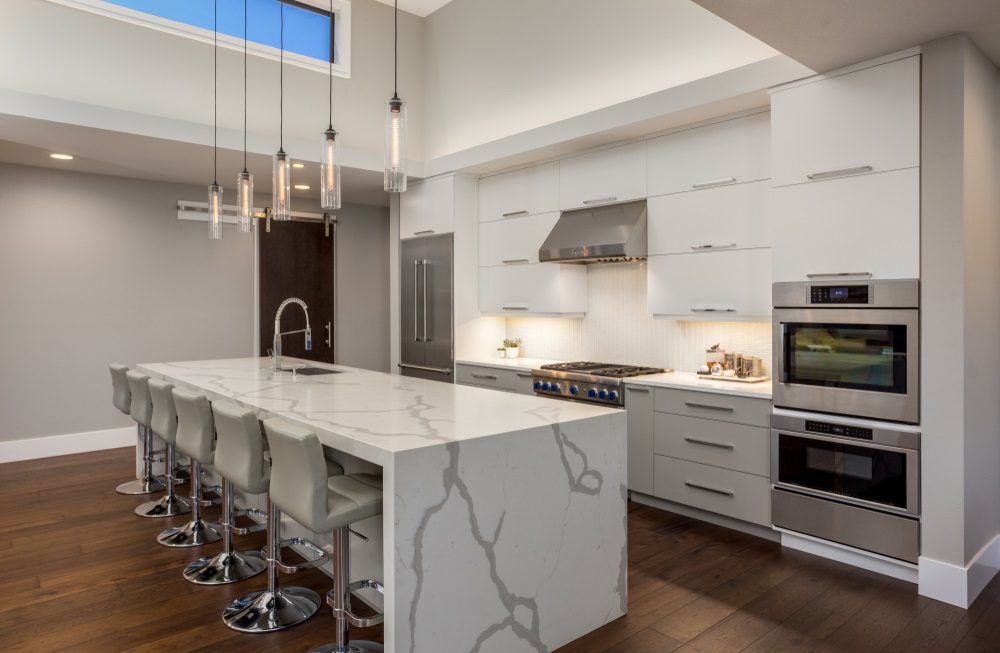

Here are some tips for maintaining and getting the most out of your kitchen remodel:
Keep It Clean
With new countertops, cabinets, and appliances, it’s important to keep up with cleaning. Wipe down surfaces after each use to prevent buildup and grime. Use soft cloths and mild cleaners to protect finishes. Clean the range hood filter and empty the dishwasher filter regularly.
Organize Storage
Maximize storage space in your new cabinets and drawers. Use organizers, turntables, and racks to arrange items neatly. Label shelves and bins so you can easily find what you need. Purge items you don’t use to free up room for essentials.
Protect Surfaces
Cutlery, trivets, and hot pads can help shield your gorgeous new countertops and island from harm. Avoid placing hot pans directly on stone surfaces. Seal granite and grout periodically to prevent stains. Handle cabinet doors and drawers gently to prevent nicks and scratches.
Enjoy Entertaining
Show off your new kitchen by hosting family dinners and get-togethers. The open layout and extra counter space are perfect for cooking together. Add bar stools for casual dining. Make sure lighting is adequate for prepping and cooking.
Personalize with Décor
Add plants, artwork, rugs, and other accents to give your kitchen personality. Display sentimental pieces, cookbooks, or pottery you love. Change up décor seasonally to keep things feeling fresh. Add pops of color with towels, organizers, and appliances.
FAQs
Before starting a kitchen remodel, it’s essential to plan thoroughly. Define your goals, create a budget, choose a reliable contractor, and plan for meal preparation and dining arrangements during the renovation process.
How Can I Set a Realistic Budget for My Kitchen Remodel?
Determine your financial limit, research typical remodeling costs, and allocate extra funds for unexpected expenses. It’s also wise to prioritize aspects of the remodel that will increase your home’s value.
What Are the Latest Trends in Kitchen Design for 2024?
To keep up with the latest trends, look into sustainable materials, smart kitchen technologies, multifunctional spaces, and innovative storage solutions. Trends in 2024 may also include unique color schemes and textures.
How Can I Minimize Disruption During the Remodeling Process?
You can minimize disruption by setting up a temporary kitchen, maintaining clear communication with your contractor, and creating a timeline for the renovation with built-in buffer periods for any delays.
What Should I Not Overlook When Remodeling My Kitchen?
Don’t overlook the importance of functional design, including adequate storage space, good lighting, ventilation systems, and quality materials that offer durability and ease of maintenance.
In Conclusion
With some care and creativity, your kitchen remodel will stay beautiful and functional for years. Follow these tips to get the most enjoyment out of your new space. Need professional help? Then make sure to get in touch with Unique Kitchen and Baths remodeling center in Mission Viejo to receive a free consultation at our showroom!
